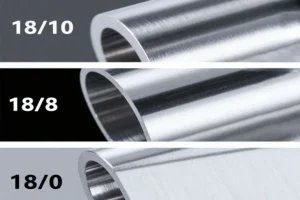For centuries, brass and bronze have shaped human craftsmanship, from ancient armor and sculptures to today’s décor, machinery, and architecture. They may look similar at first glance, but when you compare brass vs bronze, their differences are both fascinating and significant.
Understanding how these metals vary in appearance, strength, and value can help you make the right choice for your project. Whether you are selecting materials for interior design, restoration work, or industrial applications, this guide will help you see the clear distinctions between bronze vs brass.
What Is Brass
Brass is a copper-based alloy that contains zinc. The proportion of zinc can vary depending on how the metal will be used, but the outcome is always the same: a bright, golden material that is both elegant and practical.
Brass is known for its smooth finish, warm glow, and ability to resist tarnish. It is commonly found in light fixtures, furniture accents, door handles, and musical instruments. Designers and fabricators love working with it because it is easy to shape, machine, and polish.
When discussing brass vs bronze color, brass generally has a yellow or gold tone that gives it a luxurious appearance. Its shine and richness make it perfect for adding warmth to both classic and modern interiors.
What Is Bronze
Bronze is another copper-based alloy, but instead of zinc, it primarily contains tin. Sometimes small amounts of aluminum, nickel, or manganese are also added to improve performance.
Bronze has a darker, deeper tone compared to brass, often showing shades of red or brown. It is stronger, harder, and more resistant to wear and corrosion. Because of this, it is often used in outdoor sculptures, marine equipment, and heavy-duty industrial components.
When comparing bronze vs brass, bronze offers greater durability and a more rustic appearance, while brass provides brightness and flexibility.
Brass vs Bronze Color: How to Tell the Difference
The brass vs bronze color comparison is one of the easiest ways to distinguish between the two.
- Brass: Has a bright yellow or gold hue and a highly reflective finish. The more zinc it contains, the lighter and shinier it becomes.
- Bronze: Displays a darker, reddish-brown tone with a matte or slightly textured surface.
Over time, both metals develop a patina. Bronze tends to darken into rich brown or green shades, while brass develops a warm golden tint.
When choosing between the two, consider the style you want to achieve. Brass suits elegant, contemporary designs, while bronze works beautifully in classic, industrial, or vintage-inspired spaces.
Antique Brass vs Bronze: Choosing the Right Finish
Interior designers and manufacturers often compare antique brass vs bronze finishes when selecting materials for furniture, fixtures, and hardware. Each finish tells its own visual story and sets a different mood.
- Antique Brass: This finish features a soft, aged golden tone that feels warm and inviting. It is often used in door handles, lamps, and mirrors to add a touch of classic elegance.
- Antique Bronze: This finish has a darker, more aged appearance, with deep brown and copper undertones. It is commonly used in rustic, vintage, and industrial settings to create a strong, traditional aesthetic.
When choosing between antique brass vs bronze, consider the atmosphere you want to create. Antique brass is perfect for spaces that need a subtle glow, while antique bronze adds character and a sense of history.
Bronze vs Brass Price: Understanding the Cost Difference
When comparing bronze vs brass price, bronze is typically more expensive. The reason lies in their composition. Tin, the main ingredient in bronze, costs more than zinc, which is used in brass.
In addition, bronze is stronger and more corrosion-resistant, which makes it valuable for outdoor and marine applications. Brass, on the other hand, is more affordable and easier to produce, making it ideal for decorative and indoor uses.
To summarize the bronze vs brass price difference:
- Brass: More economical, easier to fabricate, and ideal for design projects.
- Bronze: More costly, more durable, and perfect for long-term or high-stress applications.
Performance and Durability Comparison
Although both metals share copper as a base, their properties differ in many ways.
- Strength: Bronze is harder and more durable, suitable for heavy use or extreme environments.
- Malleability: Brass is softer, which makes it easier to bend, shape, and machine.
- Corrosion Resistance: Bronze resists corrosion better, especially in saltwater or outdoor conditions.
- Maintenance: Brass requires occasional polishing to maintain its brightness, while bronze develops a natural patina that adds to its charm.
In short, brass vs bronze is a choice between elegance and endurance.
Where to Use Brass and Bronze
Each of these metals has its strengths and ideal uses.
Brass is perfect for:
- Architectural and interior design elements
- Light fixtures and furniture handles
- Musical instruments and decorative pieces
- Plumbing parts and fittings
Bronze is best suited for:
- Outdoor sculptures and public art installations
- Bearings, bushings, and industrial machinery
- Marine applications and ship components
- Antique reproductions and historical restoration projects
When evaluating bronze vs brass, think of brass as the artist’s metal, while bronze serves as the engineer’s favorite for strength and performance.
Mixing Brass and Bronze in Modern Design
In modern interiors, combining both metals is a growing trend. Designers often use brass vs bronze finishes together to create a stylish balance of contrast and harmony.
For example, warm brass lighting fixtures can complement dark bronze cabinet handles, adding depth and sophistication to a space. The mix of tones provides texture and visual interest while maintaining a cohesive look.
This blend of metals bridges the gap between luxury and tradition, making it a favorite design choice for kitchens, bathrooms, and commercial interiors.
Sustainability and Long-Term Value
Both brass and bronze are fully recyclable, making them sustainable options for eco-conscious projects. They are also incredibly long-lasting, meaning that products made from either metal can last for decades with minimal maintenance.
Even though bronze vs brass price can differ, both materials retain their value over time. Their durability, beauty, and timeless appeal make them worthwhile investments for any application.
Summary
The brass vs bronze comparison reveals that both metals have distinct advantages. Brass offers a golden, refined look, affordability, and versatility, making it ideal for decorative and architectural use. Bronze provides unmatched strength, durability, and a darker, more historic charm.
When evaluating brass vs bronze color, antique brass vs bronze finishes, or the bronze vs brass price, the best choice depends on your needs. If you want brightness and elegance, choose brass. If you need endurance and character, choose bronze.
No matter which metal you prefer, both have stood the test of time and continue to inspire architects, engineers, and artists around the world. Their combination of beauty and strength ensures that they remain two of the most respected materials in modern design and manufacturing.






